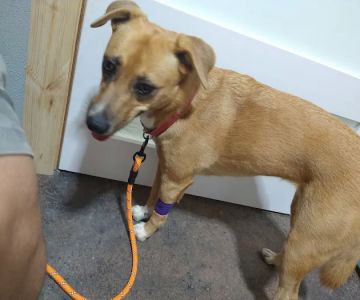What Is a Crash Plan Veterinary Chart?
As a pet owner, the thought of your furry friend needing emergency care can be overwhelming. However, understanding how veterinary professionals manage these critical situations can offer peace of mind. A crash plan veterinary chart is a tool that many veterinary clinics use to ensure that they can respond quickly and effectively in case of emergencies. These charts contain essential information about the pet's medical history, allergies, medications, and specific emergency protocols. When I first encountered this concept, I was surprised at how organized and detailed the process was for managing a pet’s emergency care, making me realize how important these charts are for saving lives.
1. The Importance of a Crash Plan Veterinary Chart
In emergency veterinary care, timing is everything. The faster a veterinarian can access crucial medical information, the better the chances of providing the pet with the right treatment. A crash plan veterinary chart provides an immediate overview of the pet's health status, which helps the medical team quickly decide the best course of action during a crisis. I learned about its importance when my dog, Max, needed emergency treatment, and I witnessed how much quicker the clinic was able to respond due to having all his information on hand, thanks to the chart.
1.1 Quick Access to Critical Information
The chart typically includes the pet's breed, age, and medical history, along with any chronic conditions, allergies, or medications they might be taking. This allows the veterinary team to prepare in advance and avoid any potential complications from existing conditions. I noticed when I spoke to my vet about the importance of these charts, they explained how crucial it is to have this information on hand, as it could prevent adverse reactions or delays in care during emergencies.
1.2 Streamlining Emergency Protocols
Another vital aspect of the crash plan veterinary chart is the emergency protocols it outlines. This includes information on how to handle certain situations like cardiac arrest, seizures, or trauma. Having a clear set of steps ensures that the veterinary team can quickly spring into action without any confusion. From my experience, knowing that these protocols were in place helped me feel more confident that Max was in good hands during a crisis.
2. How a Crash Plan Veterinary Chart Is Created
Creating a crash plan veterinary chart is a collaborative effort between pet owners and veterinary professionals. The process starts with an in-depth consultation between the pet owner and the veterinarian. During this time, the vet will gather essential medical information, including vaccination records, any known health issues, and the pet's reaction to certain treatments. Once this information is collected, it's organized into a structured format that is easy to access during emergencies. I remember when I first brought Max in for a check-up, I didn’t realize how detailed the chart would be, but after the vet went over the chart with me, I understood its value in emergency care.
2.1 Customizing the Chart for Your Pet's Needs
Each crash plan veterinary chart is customized to the individual pet's needs. This ensures that no matter what type of emergency arises, the veterinary team will have the most accurate and relevant information to make the best decisions. My vet explained that a chart might include additional notes about specific medical concerns, such as heart conditions, respiratory issues, or even behavioral concerns that could affect emergency care. This personalized approach helps prevent errors in diagnosis or treatment, which could make all the difference in an emergency situation.
2.2 Keeping the Chart Up-to-Date
One important thing I learned during my visit is that a crash plan veterinary chart must be regularly updated to remain useful. This includes adding any new medical conditions, changes in medications, or updated vaccination records. When Max’s chart was first created, I was told to schedule follow-up visits to ensure that his chart reflected his latest health status. Regular updates are essential to ensuring that the chart remains relevant and effective in emergency situations. The last thing you want is outdated information during an emergency!
3. How Pet Owners Can Contribute to the Chart
As a pet owner, you play an essential role in the creation and maintenance of a crash plan veterinary chart. Beyond providing accurate medical history and keeping the chart updated, it's important to be proactive about sharing any new symptoms or behavioral changes your pet may be experiencing. I made sure to communicate with my vet about Max’s diet and any unusual symptoms I noticed, even minor ones. By sharing this information, I helped ensure that his chart was as accurate as possible, allowing the vet to make informed decisions in case of an emergency.
3.1 Sharing Behavioral Changes and New Symptoms
If your pet suddenly becomes more lethargic, loses appetite, or experiences abnormal behavior, it’s crucial to let your vet know. These changes could indicate underlying health problems that might require immediate attention. During a visit, I mentioned to my vet that Max had been more sluggish than usual, which led to further tests and ultimately a change in his medication. Had I not mentioned this, it could have affected how his chart was created or updated, possibly resulting in inadequate emergency care.
3.2 Communicating Any Lifestyle Changes
Lifestyle changes, such as diet or exercise routines, should also be communicated to your vet. Changes like moving to a new environment, a new pet in the house, or a change in diet can affect your pet’s health. When I moved to a new apartment, I made sure to let the vet know so they could adjust the crash plan chart for any new factors that might impact Max's well-being.
4. The Role of Veterinary Technology in Crash Plans
With the rise of technology, many veterinary clinics are now using digital systems to create and store crash plan charts. These systems make it even easier for veterinarians to access information in real-time, especially in emergency situations. During my visit, I was impressed to see how the clinic used a computerized system to update and maintain Max’s chart. The vet explained that digital records are more efficient and help prevent errors associated with manual records. These digital systems can also help clinics share information more easily with emergency animal hospitals if needed.
4.1 Benefits of Digital Records
Digital records are not only faster to access but also offer a higher level of security and accuracy. I was reassured knowing that Max’s chart was stored digitally, as it allows for instant updates and ensures that every detail is accurately captured. If Max ever needs care outside of his regular vet, his information can be securely shared with another clinic, ensuring continuity of care.
4.2 Accessing the Chart During Emergencies
In emergencies, time is of the essence. Digital crash plan charts can be accessed instantly, whether you're in the clinic or at an emergency facility. I learned that many veterinary clinics are now equipped with mobile technology that allows them to access the charts wherever they are. This is particularly useful if your pet requires urgent care and you are in a different location. The ease of accessing the chart at a moment’s notice can help ensure that the emergency care is appropriate and timely.











